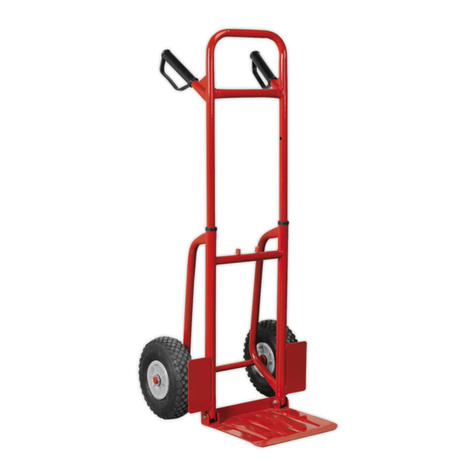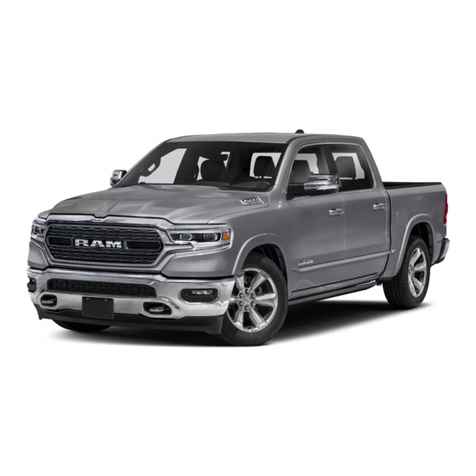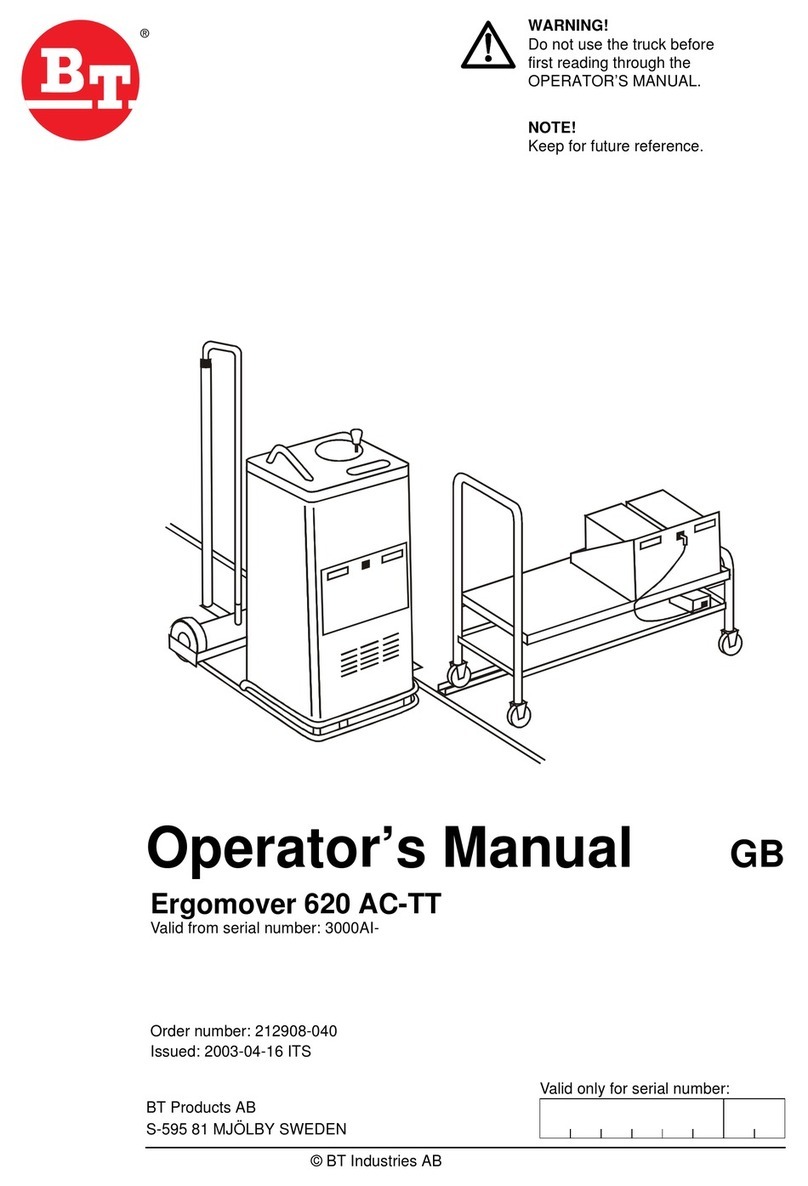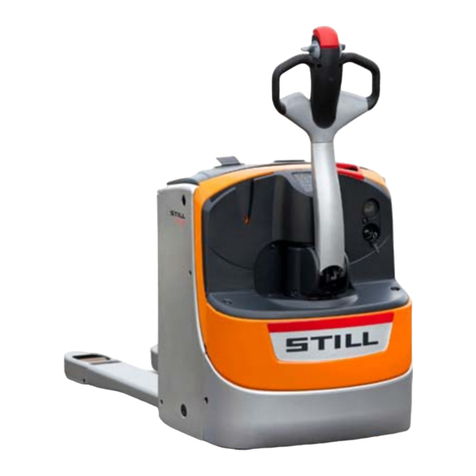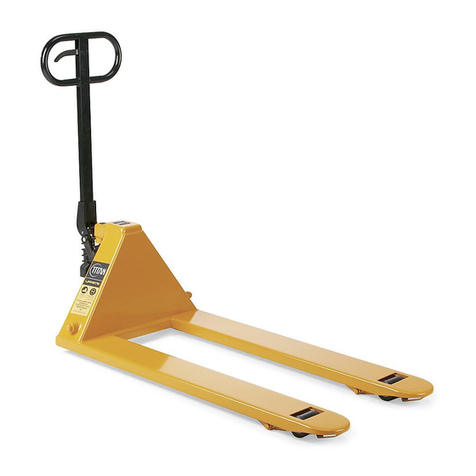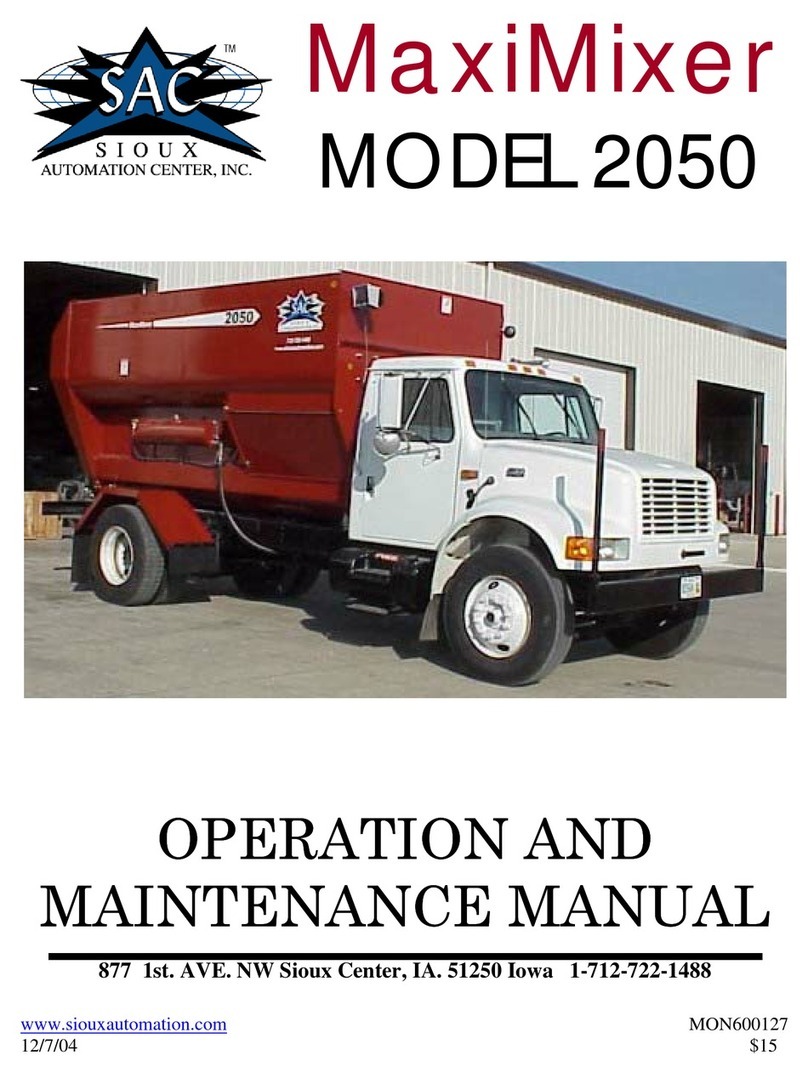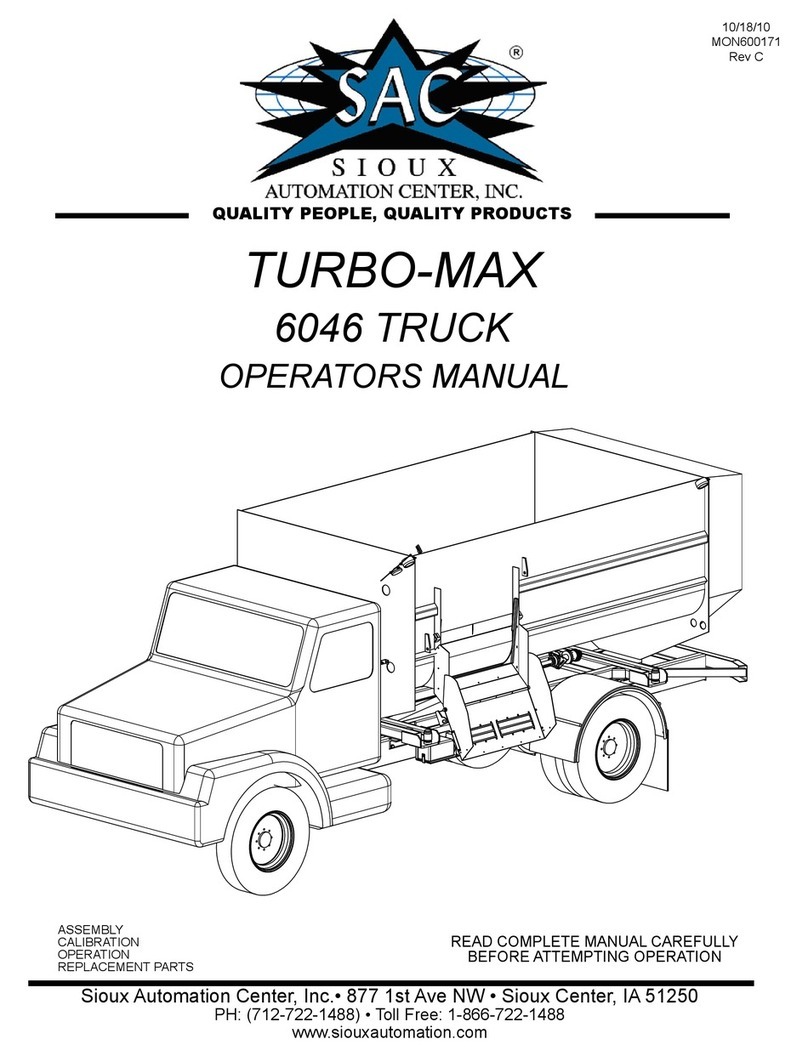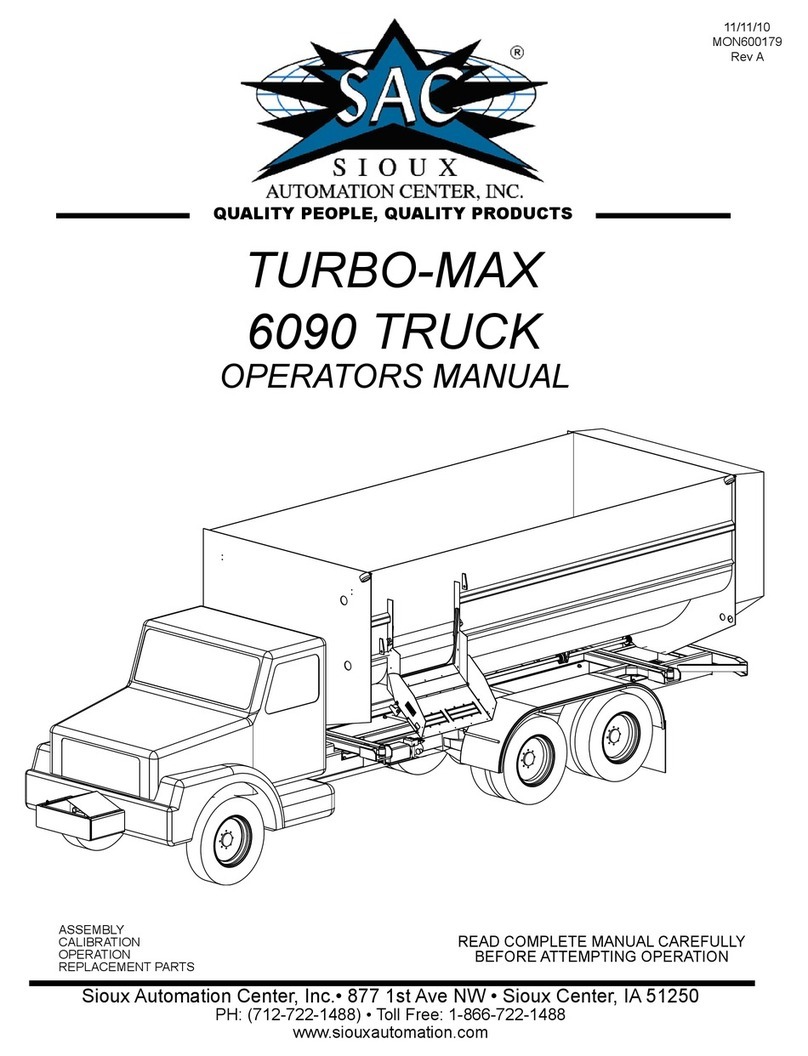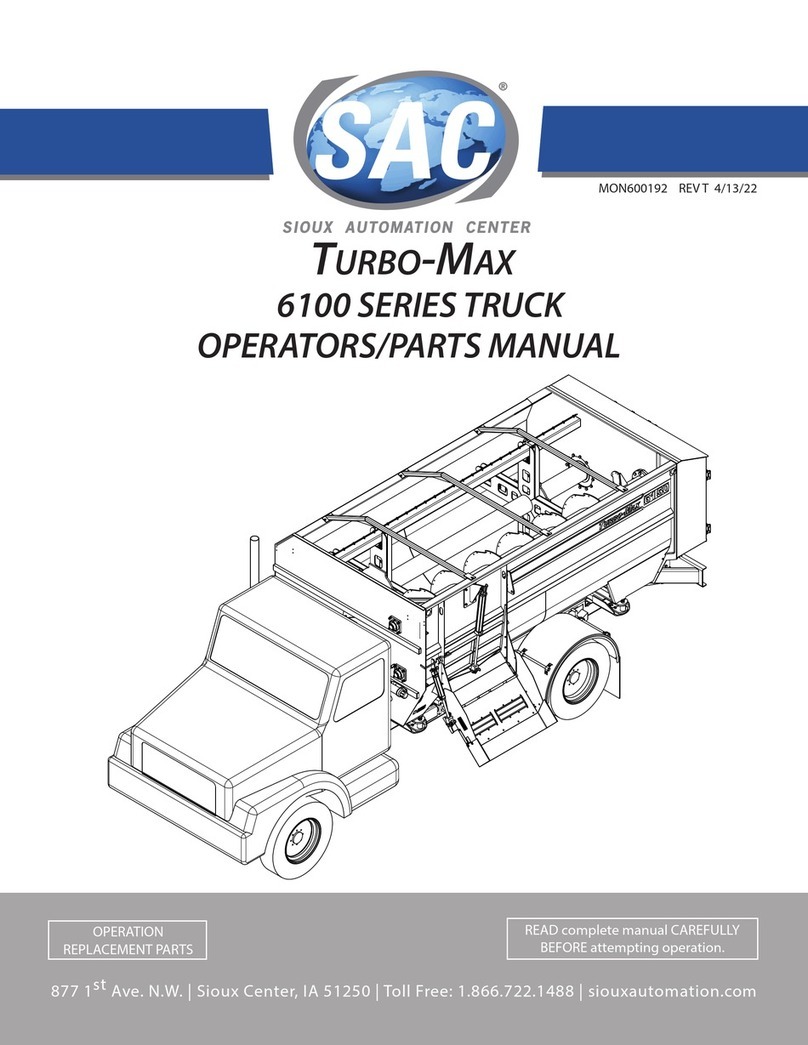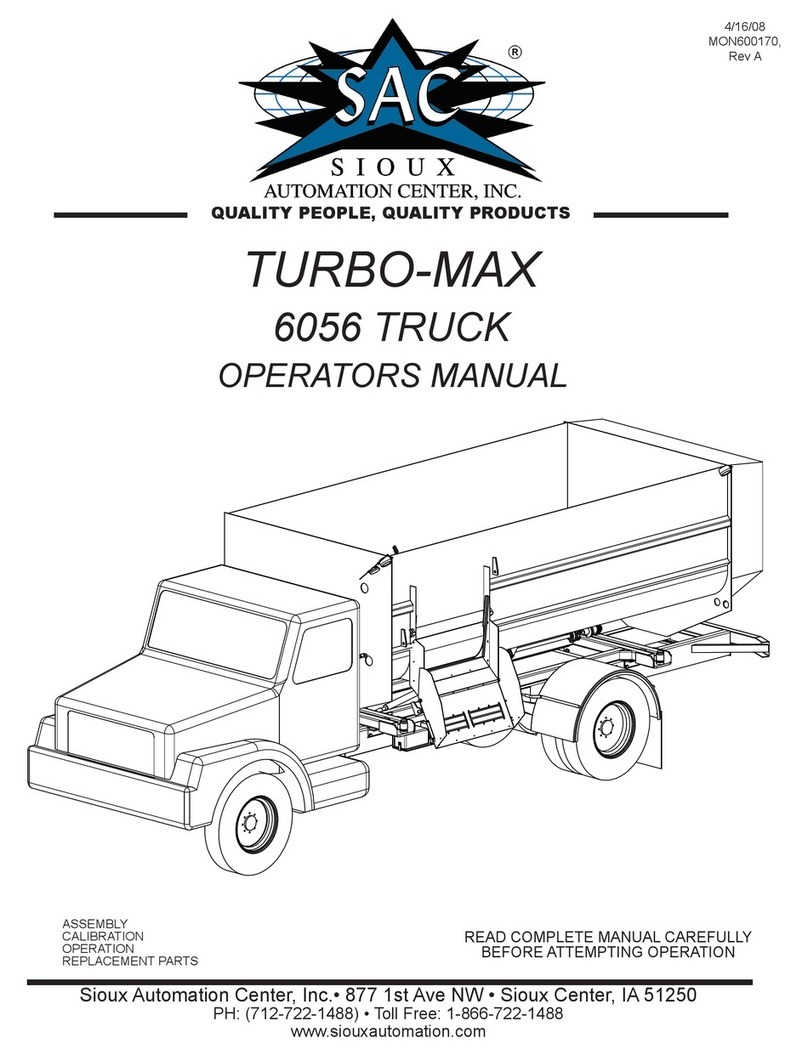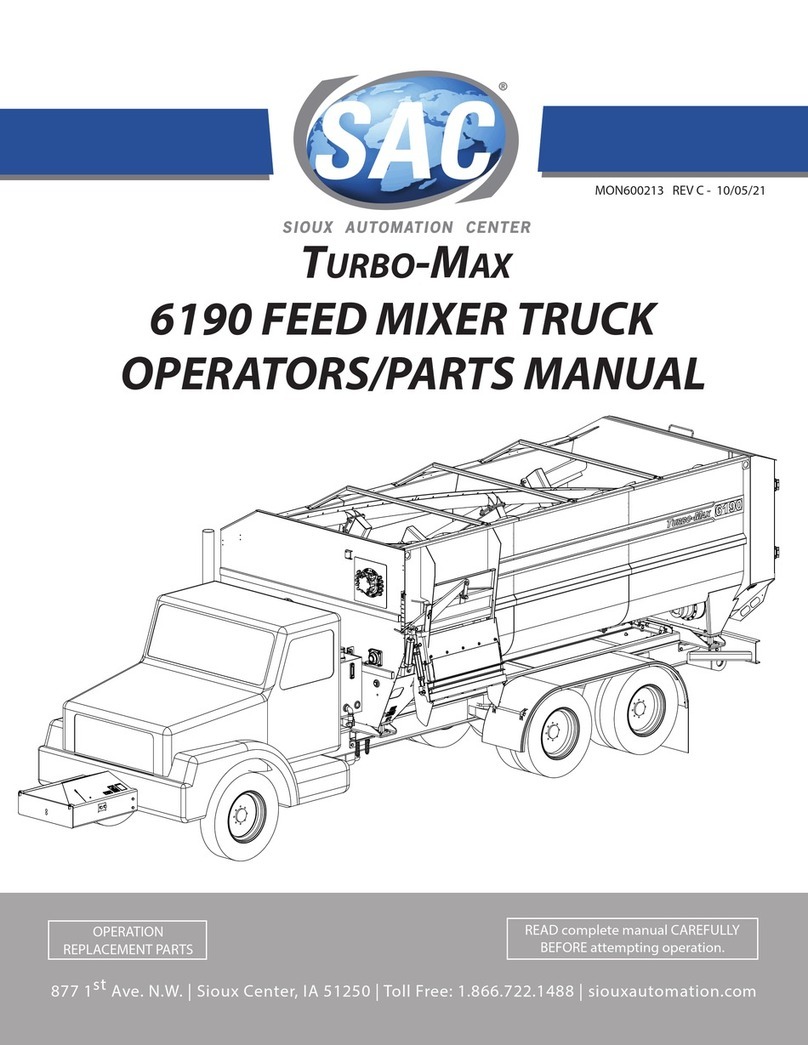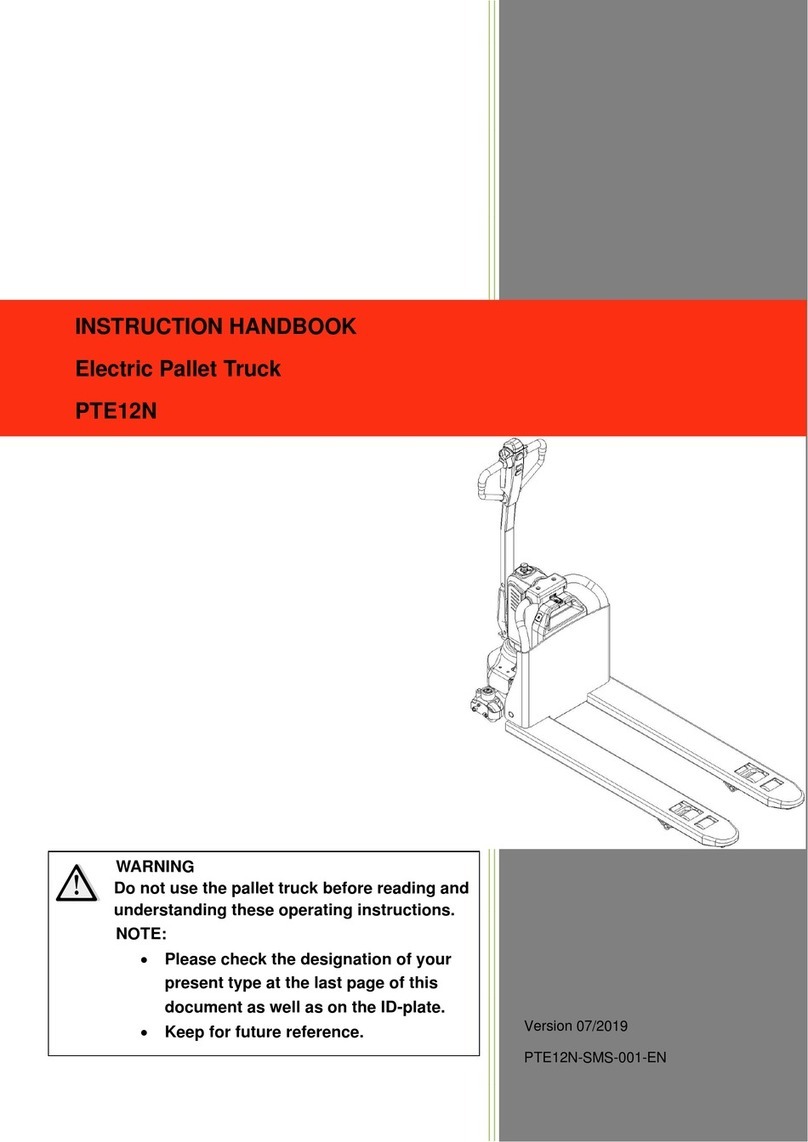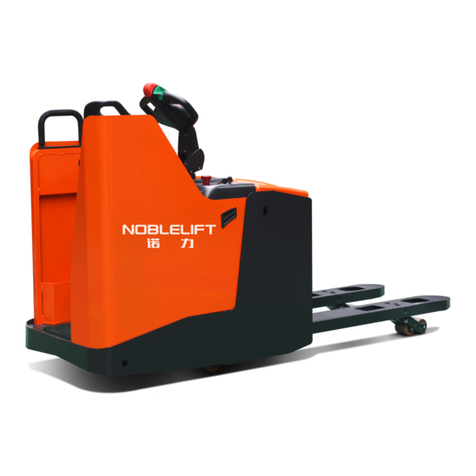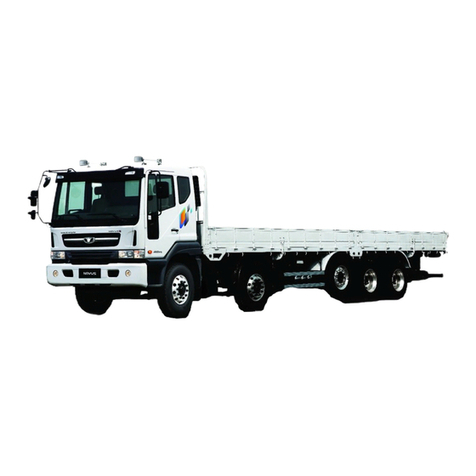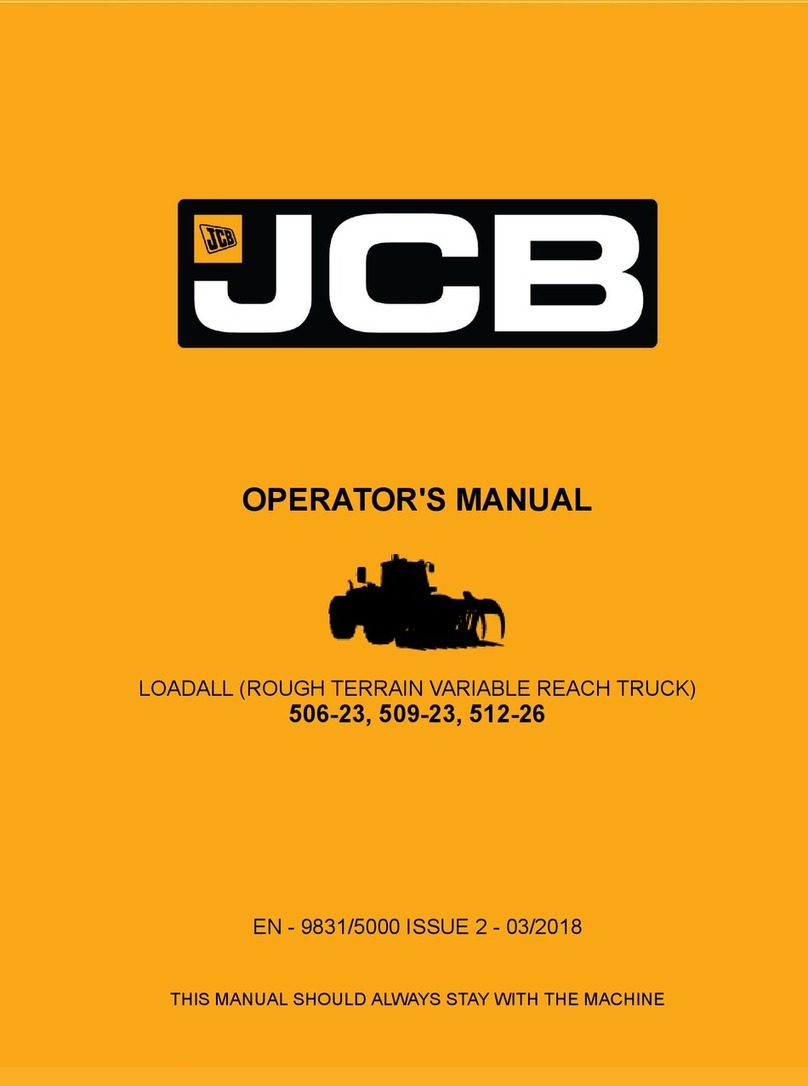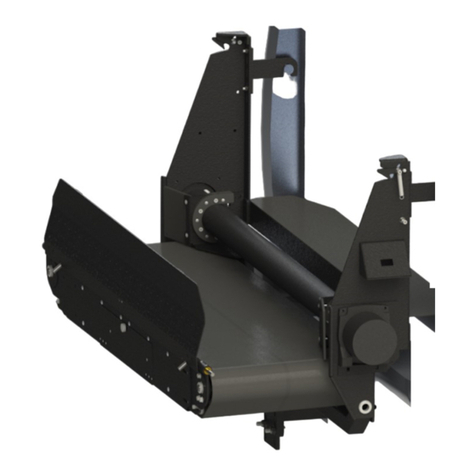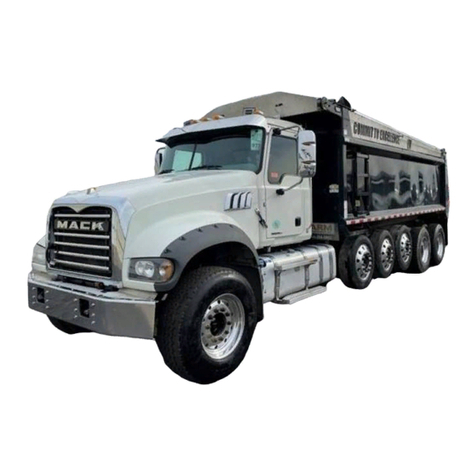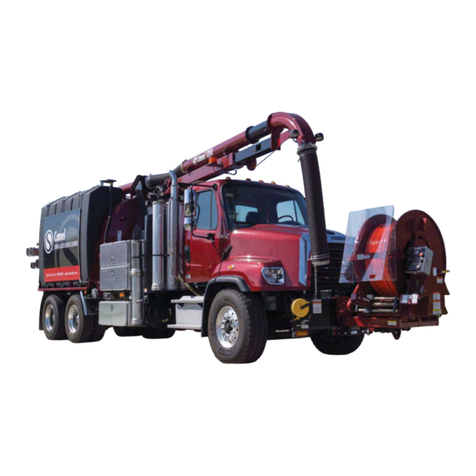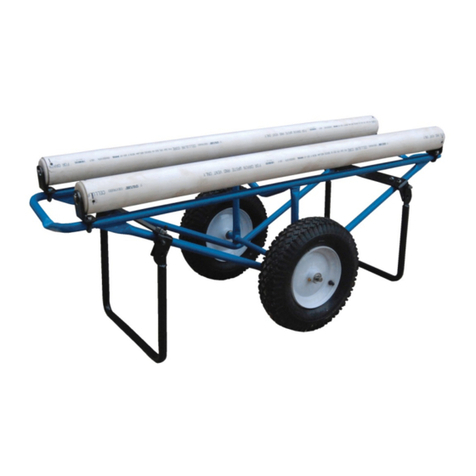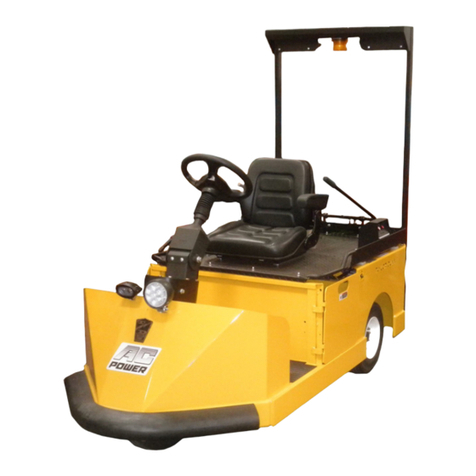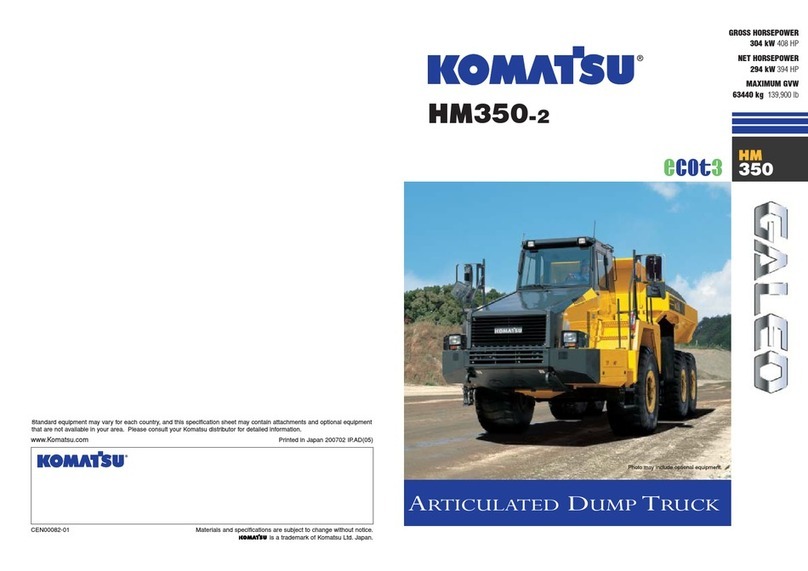
Page # 3
GENERAL INFORMATION
1. Unless otherwise specied, high-strength (grade5)
(3 radial-line head markings) hex head bolts are used
throughout assembly of this piece of equipment.
2. Whenever terms “LEFT” and “RIGHT” are used in this
manual it means from a position behind mixer box and
facing forward.
3. When placing a parts order, refer to this manual for
proper part numbers and place order by PART NO. and
DESCRIPTION.
4. Read assembly instructions carefully. Study
assemblyproceduresandallillustrationsbeforeyoubegin
assembly.Notewhichpartsareusedineachstep.Thisunit
mustbe assembledin propersequenceorcomplications
will result.
WARNING: TO AVOID PERSONAL INJURY OR DEATH, OBSERVE FOLLOWING
INSTRUCTIONS:
Never overload mixer. Rating of gear or rating of tires, whichever is less.
Ensure that anybody present is clear before applying power to any machinery used in conjunction with
mixer box or when moving box.
Never allow anyone in, near, or on mixing chamber during mixing, transporting, or unloading of feed.
INTRODUCTION
Thank you for purchasing aTurbo-Max MixerTruck. We feel you have made a wise choice and hope you are completely satised with
your new piece of equipment. Your new Turbo-Max Mixer Truck is a durable, ecient and easy to use unit. Proper care and use will
result in many years of service.
Table of Contents
General Information.......................................................................................................................................................................... 3
Model and Serial Number Identication .................................................................................................................................. 4
Safety, Signal Words.......................................................................................................................................................................... 6
Equipment Safety Guidelines........................................................................................................................................................ 7
Lighting and Marking.......................................................................................................................................................................7
Safety Sign Care..................................................................................................................................................................................7
Tire Safety ............................................................................................................................................................................................. 8
Before Operation................................................................................................................................................................................ 8
During Operation............................................................................................................................................................................9-10
Following Operation........................................................................................................................................................................10
Highway and Transport Operations ........................................................................................................................................10-11
Performing Maintenance ...............................................................................................................................................................11
Bolt Torque ..........................................................................................................................................................................................12
Mixer Setup.........................................................................................................................................................................................13
Mixer Operation..............................................................................................................................................................................14-15
Control Console .............................................................................................................................................................................16-19
Maintenance Inspection and Adjustments ............................................................................................................................20
Lubrication .........................................................................................................................................................................................21
Decal Location....................................................................................................................................................................................22
Box Base Assembly........................................................................................................................................................................24-27
1000 RPM Drive Kit ..........................................................................................................................................................................28
Reel Assemblies .............................................................................................................................................................................30-37
Reel Bearing Assembly ...................................................................................................................................................................38
Auger Assemblies ............................................................................................................................................................................39
Final Assembly ................................................................................................................................................................................40-41
Truck Base Assembly........................................................................................................................................................................42
Discharge Breakdown .....................................................................................................................................................................43
Hydraulics Breakdown .................................................................................................................................................................44-45
Drive Assemblies ...........................................................................................................................................................................46-47
Oil Specications for Drop Gearbox ..........................................................................................................................................48
Drive Assemblies ..............................................................................................................................................................................49
Console Assembly.............................................................................................................................................................................50
Control Box Assemblies .................................................................................................................................................................51
Light Kit ...............................................................................................................................................................................................52
DS Remote Scale Kit .....................................................................................................................................................................53-54
Loadcell Retainer Kit .......................................................................................................................................................................55
Bumper Options ............................................................................................................................................................................56-57
Fender Options .................................................................................................................................................................................58
Model Specications .......................................................................................................................................................................59
Warranty............................................................................................................................................................................................60-61
